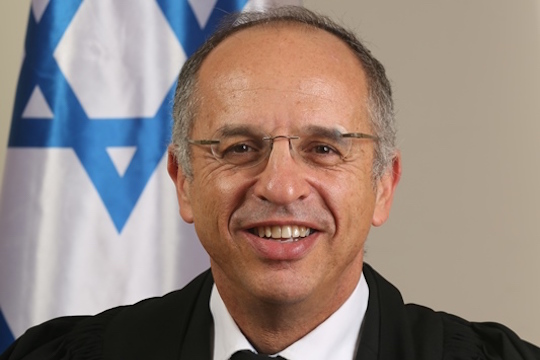The High Court justice who gave the army a green light to expel an entire Palestinian village just happens to live in a nearby settlement, one of many that thrives on their dispossession.
By Dror Etkes

The Israeli army’s Civil Administration has issued 70 demolition orders in the Jewish West Bank settlement of Alon Shvut, and 70 demolition orders in the Palestinian village of Khirbet Susya over the years.
Beyond that coincidental number, the two towns don’t have much else in common. Located in Gush Etzion, just south of Jerusalem, Alon Shvut is one of the most prosperous and well-established settlements in the West Bank. Its 3,200 residents enjoy top-notch community services and a highly desirable quality of life not only in relation to their Palestinian neighbors, but also to the general Israeli population. Khirbet Susya, on the other hand, is a collection of tents, sheds and shacks that lack the most basic civil infrastructure. Its 350 residents are scattered on a few hilltops known only to a small number of people.
Despite the 30-odd kilometers that separate the two communities fate has connected them, and as happens from time to time, rather ironically. It turns out that the man who decided the fate of Khirbet Susya, which is the current incarnation of a village that is thousands of years old, is Supreme Court Justice Noam Sohlberg, a resident of Alon Shvut. Alon Shvut is a settlement, which contrary to the Zionist mythology of Gush Etzion, only a very small part of which was purchased by Jews before 1948.
Settler activists in Alon Shvut, like many other settlements, have for years refused to accept the very concept of privately owned Palestinian land. There too, despite all the self-righteous high talk of neo-Orthodox renaissance, Justice Sohlberg’s neighbors are bent on persistently uprooting, with a certain degree of success, the agricultural activity that had been cultivated by local Palestinians for generations.
A few weeks ago Justice Noam Sohlberg rejected a petition by the Khirbet Susya village council for injunction stopping the state from demolishing their homes and expelling their residents from the land they had been forced onto when the state seized their village lands in 1986 and established the Jewish settlement of Susya. In his decision, Sohlberg wrote:
“Based on past verdicts and decisions, and given that the petitioners have taken the law into their own hands, there are no grounds for issuing an injunction. The willingness of the local authorities to suggest an alternative zoning plan is duly noted, as long as the petitioners agree to make the necessary preparations in conjunction with the planning authorities.”
The immediate consequence of the ruling is that the army can now demolish the village and expel its residents at any moment, despite the fact that the larger legal question of the village’s existence has yet to even be heard by the High Court. And that is how the neighboring settlement spreads its wings, a settlement that already controls hundreds of acres of agricultural and grazing lands that were once used by Khirbet Susya and the surrounding villages.

Justice Sohlberg consciously chose to ignore the context in which the petitioners allegedly “took the law into their own hands.” He knows very well that the residents of Khirbet Susya, like the vast majority of Palestinians in Area C (the 61 percent of the West Bank that is under Israel’s full control), have no ability to take part in the civil planning process. By accusing the villagers of that, he reveals that the judicial process over which he presided has nothing to do with justice.
Justice Sohlberg, who is the most prominent yet not the only settler on the bench, is the standard bearer of a pre-eminent Western judicial tradition, which hails back and openly draws on colonialism. The tenets of that tradition are to exclude “the natives” from decision-making circles as well as to dispense them of the basic democratic principle of the separation of powers. Sohlberg finds himself in the company of the American Supreme Court judges who, in 1857, ruled that African-Americans could not be considered American citizens, as well as those who, a century later, championed the “separate but equal” paradigm.
In the past, the division of labor in the charade that’s known as Israel’s “rule of law” in the West Bank was clear: The settler was the one pushing the boundaries and pressing on with the expulsion and dispossession, occasionally taking on the role of the soldier, in charge of “maintaining the order.” And now we see that over time, the settler has been promoted to the bench, where he decides the fate of the occupation’s direct victims. It’s hard to imagine a more idyllic arrangement.
As the recent ruling that upheld the plan to evacuate the Bedouin village of Umm al-Hiran (which is in Israel proper) demonstrates, it’s impossible to place all the blame on Sohlberg. His appointment was made possible thanks to a deep change that the Israeli society is undergoing, and which trickles up to the High Court as well.
More than anything, Sohlberg’s appointment attests to the nature of the “justice” that Israel offers to the Palestinians in the West Bank. As the Arab idiom goes: “To whom will you turn when the judge is your enemy?”
This article was first published in Hebrew on Local Call. Read it here.

